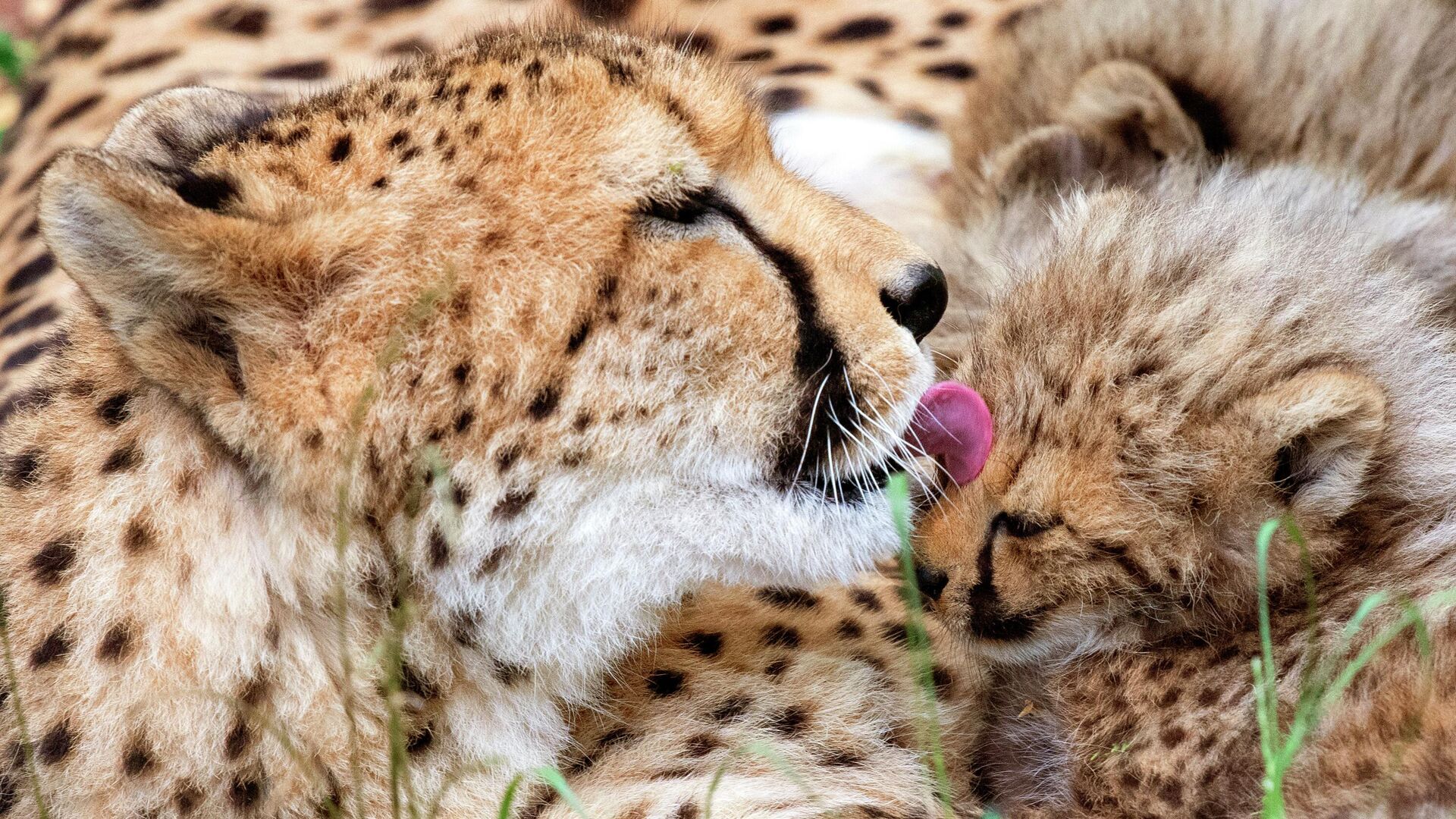https://sputnikglobe.com/20220909/south-africa-helping-to-reintroduce-endangered-species-to-india-1100607526.html
South Africa Helping to Reintroduce Endangered Species to India
South Africa Helping to Reintroduce Endangered Species to India
Sputnik International
The last known wild cheetah in India died in 1947 and the species was declared extinct five years later. Asiatic cheetahs, a species previously present in... 09.09.2022, Sputnik International
2022-09-09T18:29+0000
2022-09-09T18:29+0000
2022-11-23T11:36+0000
africa
cheetah
southern africa
https://cdn1.img.sputnikglobe.com/img/07e6/09/09/1100607039_0:185:2983:1863_1920x0_80_0_0_04fa75aac83a2a3592cf815a63dfaabc.jpg
12 cheetahs will travel from South Africa in October in order to revive the spotted cat’s population in India. The return of these creatures will contribute to the restoration of the local ecosystem. According to The Guardian, some experts criticize using African cheetahs instead of the Asian subspecies for reintroduction, noting the differences between them and questioning the success of replacing one subspecies with another.In most regions of their range, Asiatic cheetahs had gone extinct by the middle of the 20th century due to hunting, shortages of prey, and habitat destruction. Under British colonial rule, cheetahs in India were considered deleterious and were deliberately targeted. Asian cheetahs survived only in Iran, but their population is currently only numbered at around 12, which may also disappear completely in the coming years.Early attempts to bring the Asian subspecies into the country from Iran were thwarted by the Iranian Revolution of 1979, which brought a new Iranian government to power. Nowadays, the Iranian cheetah population is so small that it is impossible to use them for reintroduction. Therefore, it is now planned to bring African cheetahs to India, not Asian. The idea was approved by the Indian Supreme Court in 2020.According to the Cheetah Conservation Fund, the creatures benefit the ecosystem by keeping the animals they hunt at healthy population sizes. When possible, cheetahs hunt the weak and slowest of numerous species of animals. If cheetahs no longer existed, there would be too many herbivores, a resulting loss of vegetation, more soil erosion, less water in the fields, and an overall negative impact on the health of the ecosystem.The cheetah is known as the fastest-running animal in the world. When chasing its prey, its speed can reaches 70 kilometer per hour in two seconds. At its fastest, the cheetah can reach a maximum speed of 100-127 kilometer per hour. However, cheetahs can’t maintain this speed very long. It can chase its prey no longer than 500-600 meters. Cheetahs are usually active in the early mornings and late evenings, when the weather is less hot, and the animals usually roam alone. Sometimes males gather in small groups to hunt. Interestingly, in Namibia, group hunting has been observed to be more developed.
https://sputnikglobe.com/20201030/meows-are-deceiving-wild-cheetah-purring-on-camera-will-melt-your-heart-1080923939.html
africa
southern africa
Sputnik International
feedback@sputniknews.com
+74956456601
MIA „Rossiya Segodnya“
2022
News
en_EN
Sputnik International
feedback@sputniknews.com
+74956456601
MIA „Rossiya Segodnya“
Sputnik International
feedback@sputniknews.com
+74956456601
MIA „Rossiya Segodnya“
cheetah, southern africa
South Africa Helping to Reintroduce Endangered Species to India
18:29 GMT 09.09.2022 (Updated: 11:36 GMT 23.11.2022) The last known wild cheetah in India died in 1947 and the species was declared extinct five years later. Asiatic cheetahs, a species previously present in India, Iran, and the Middle East, were common in the region until the early 20th century. Their numbers declined due to widespread trapping, hunting, and sport.
12 cheetahs will travel from South Africa in October in order to revive the spotted cat’s population in India. The return of these creatures will contribute to the restoration of the local ecosystem. According to The Guardian, some experts criticize using
African cheetahs instead of the Asian subspecies for reintroduction, noting the differences between them and questioning the success of replacing one subspecies with another.
In most regions of their range, Asiatic cheetahs
had gone extinct by the middle of the 20th century due to hunting, shortages of prey, and habitat destruction. Under British colonial rule, cheetahs in India were considered deleterious and were deliberately targeted. Asian cheetahs survived only in Iran, but their population is currently only numbered at around 12, which may also disappear completely in the coming years.
Early attempts to bring the Asian subspecies into the country from Iran were thwarted by the Iranian Revolution of 1979, which brought a new Iranian government to power. Nowadays, the Iranian cheetah population is so small that it is impossible to use them for reintroduction. Therefore, it is now planned to bring African cheetahs to India, not Asian. The idea was approved by the Indian Supreme Court in 2020.

30 October 2020, 11:00 GMT
According to the Cheetah Conservation Fund, the creatures benefit the ecosystem by keeping the animals they hunt at healthy population sizes. When possible, cheetahs hunt the weak and slowest of numerous species of animals. If cheetahs no longer existed, there would be too many herbivores, a resulting loss of vegetation, more soil erosion, less water in the fields, and an overall negative impact on the health of the ecosystem.
The cheetah is known as the fastest-running animal in the world. When chasing its prey, its speed can reaches 70 kilometer per hour in two seconds. At its fastest, the cheetah can reach a maximum speed of 100-127 kilometer per hour. However, cheetahs can’t maintain this speed very long. It can
chase its prey no longer than 500-600 meters.
Cheetahs are usually active in the early mornings and late evenings, when the weather is less hot, and the animals usually roam alone. Sometimes males gather in small groups to hunt. Interestingly, in Namibia, group hunting has been observed to be more developed.





